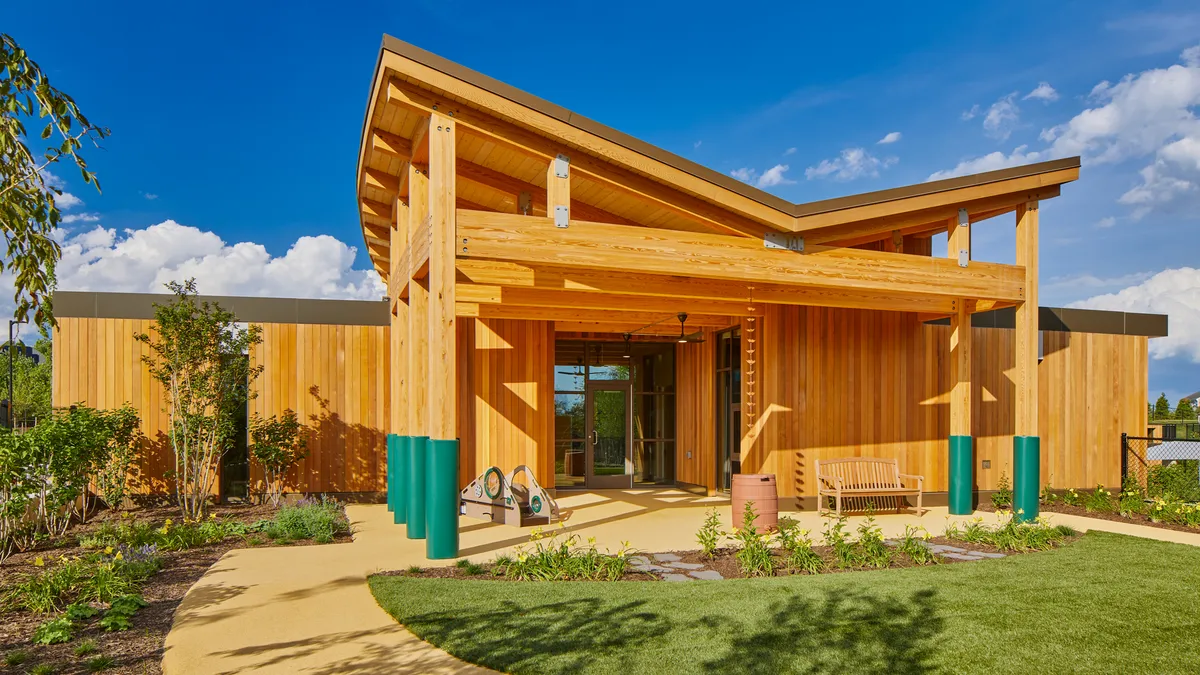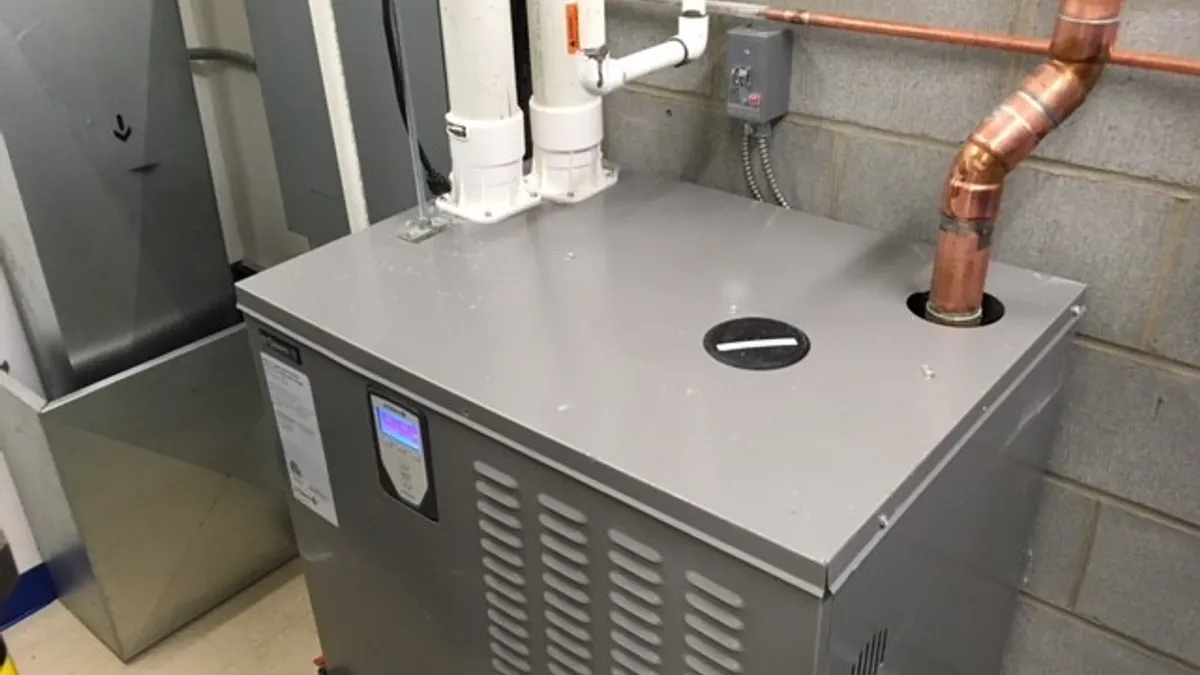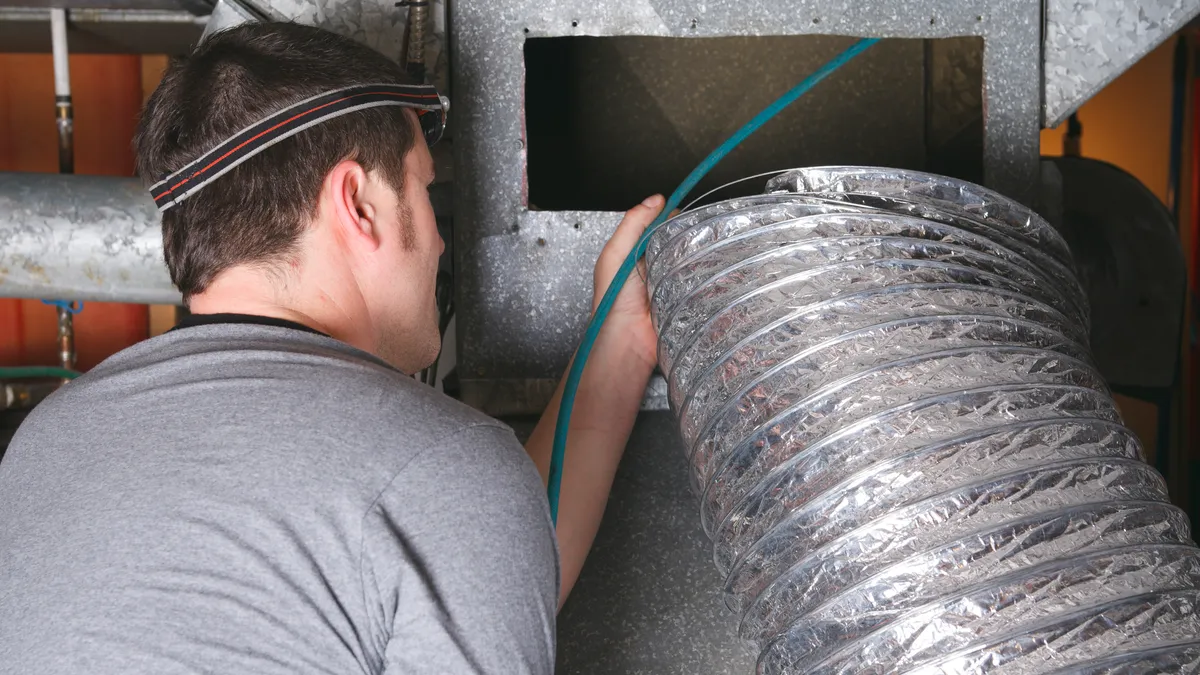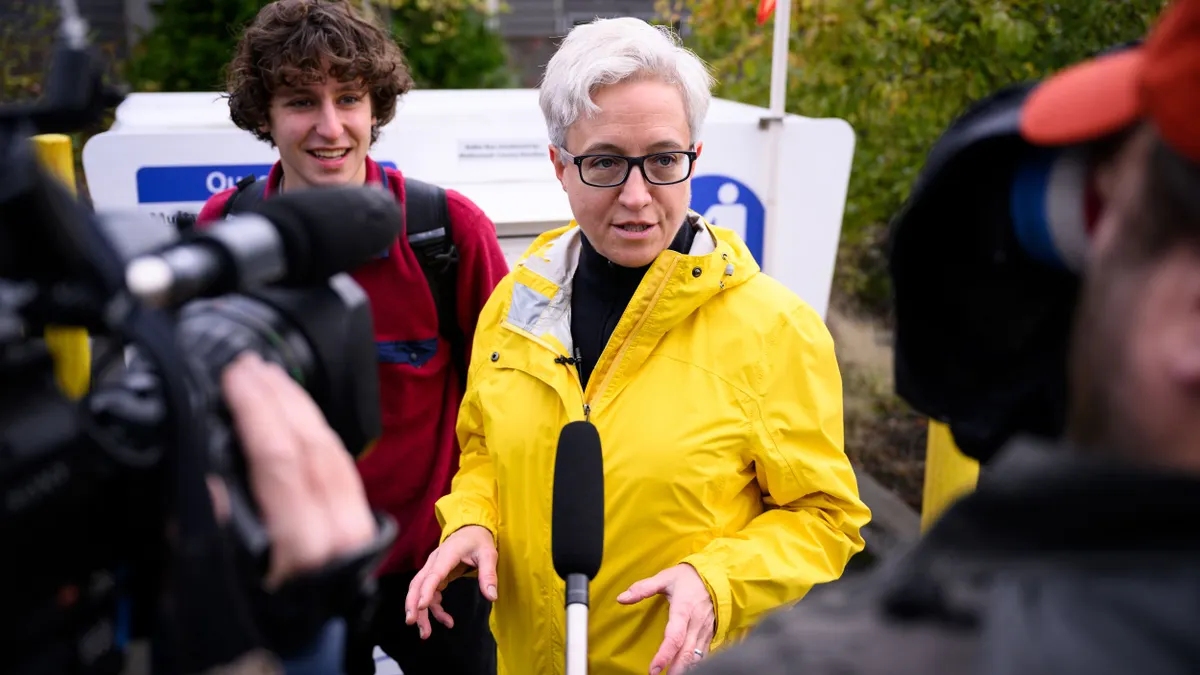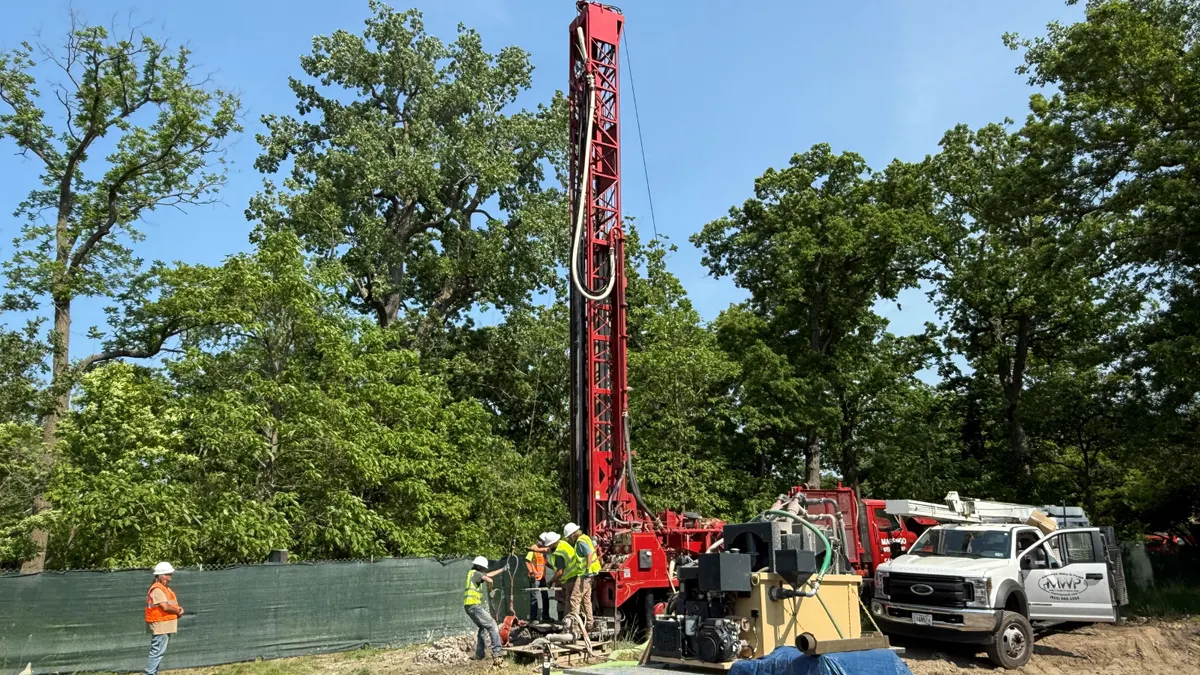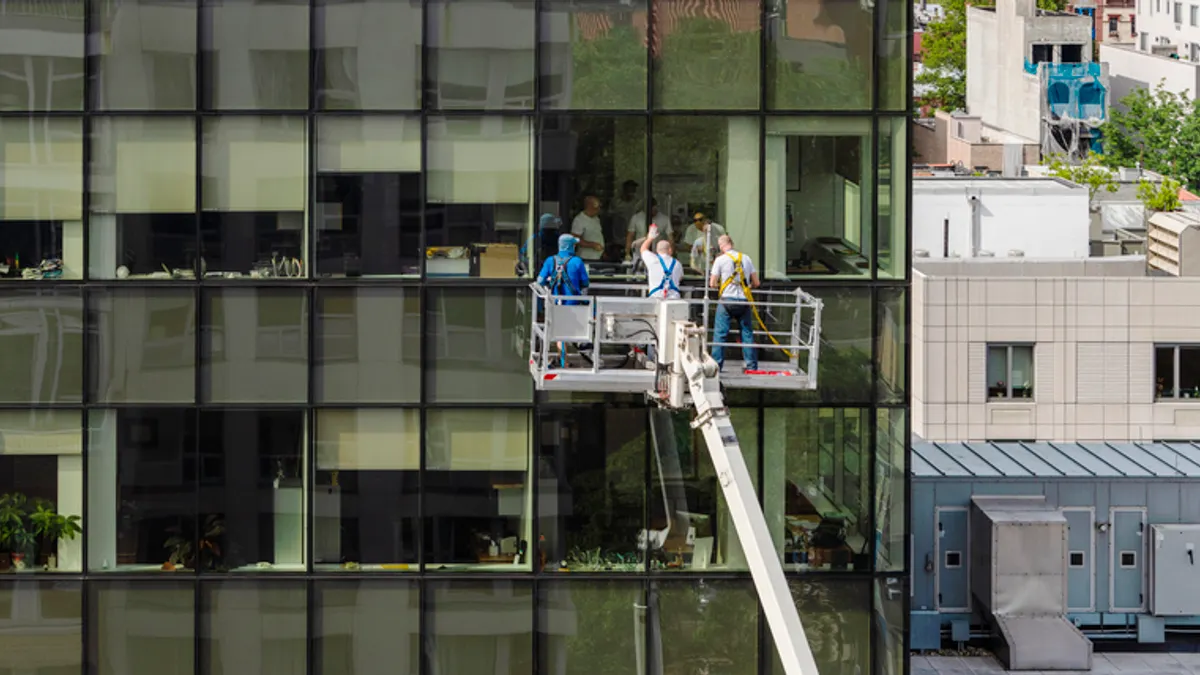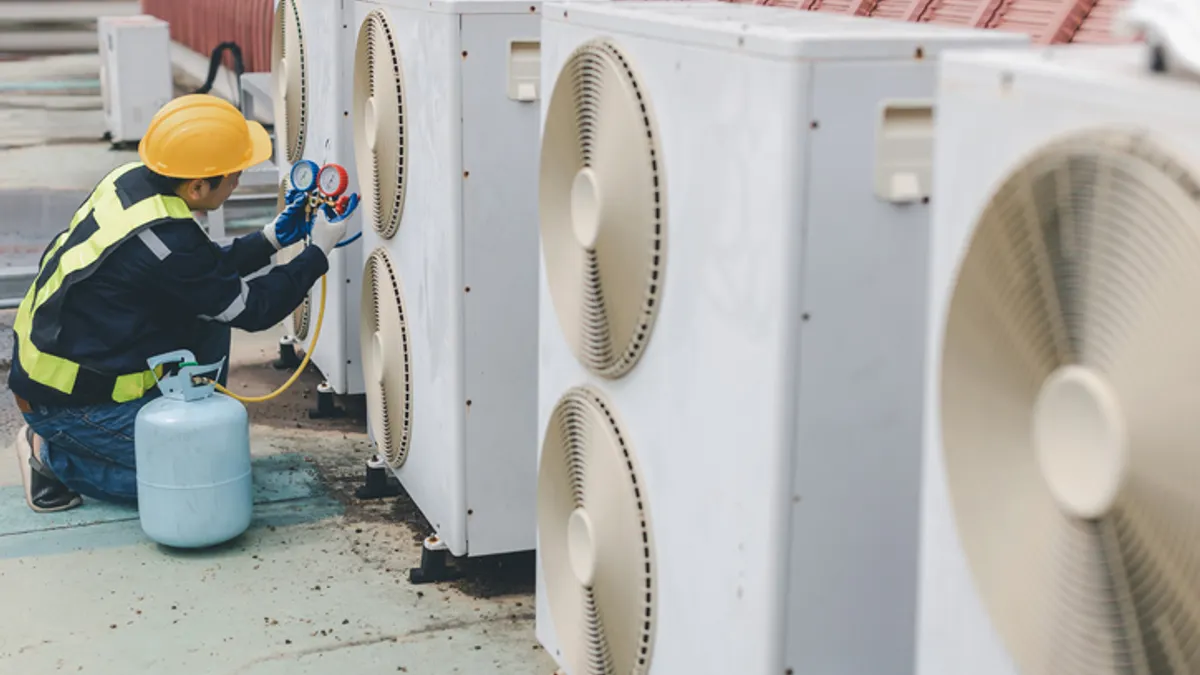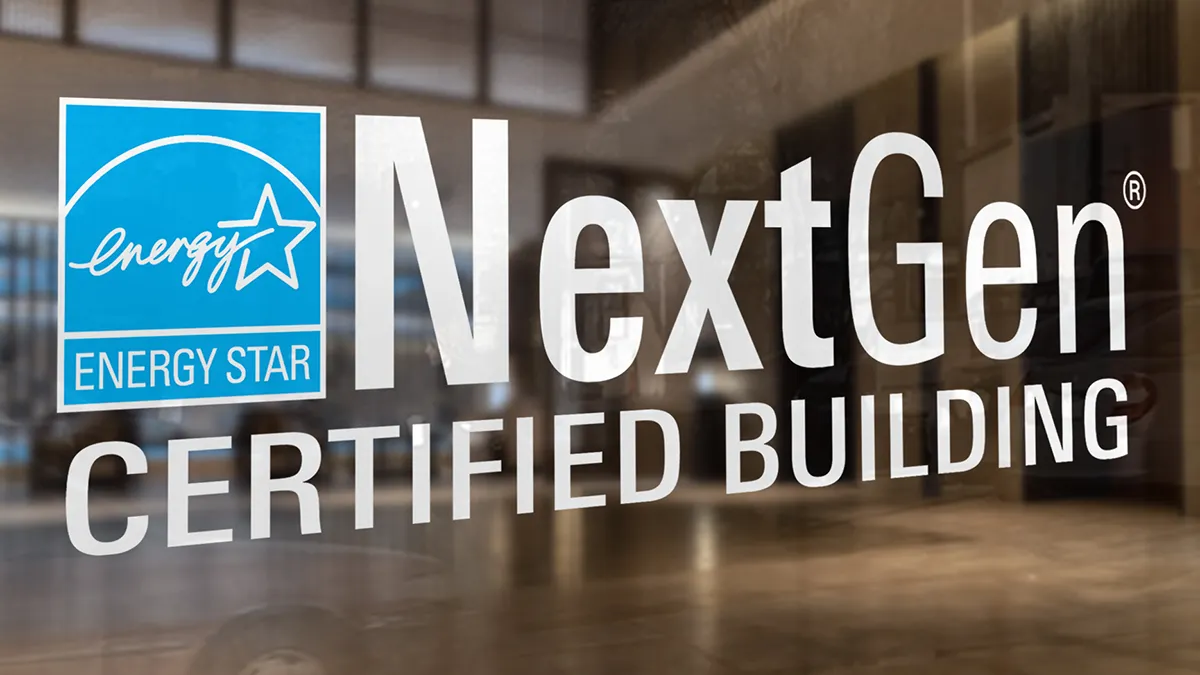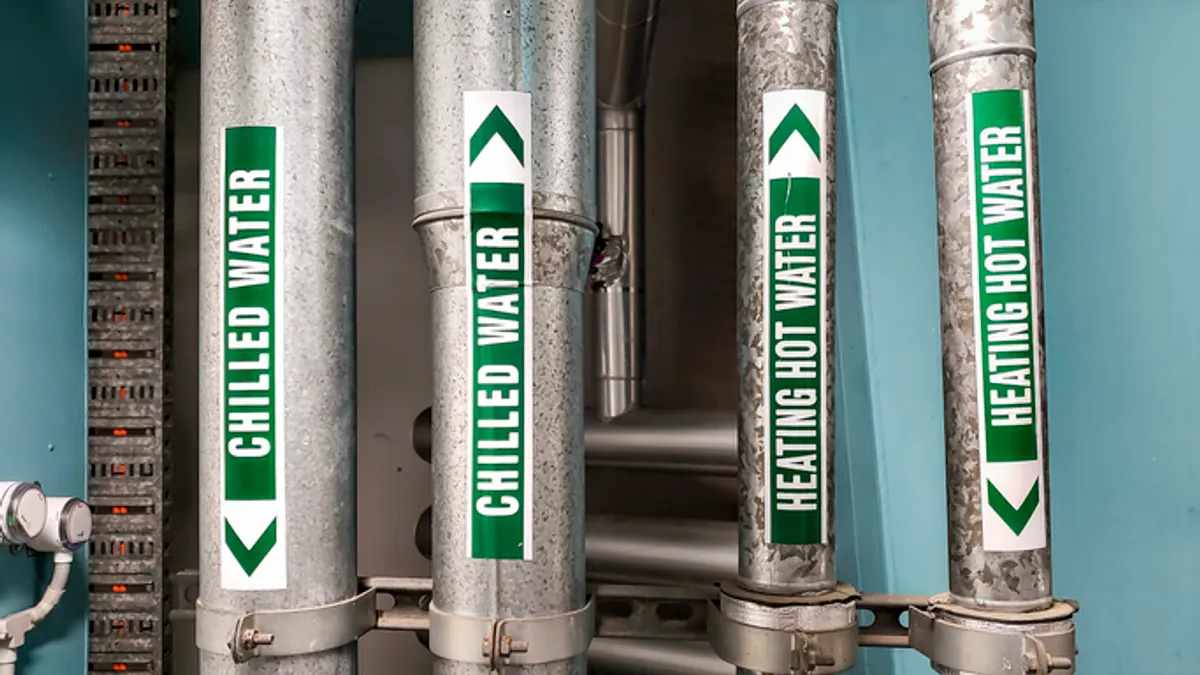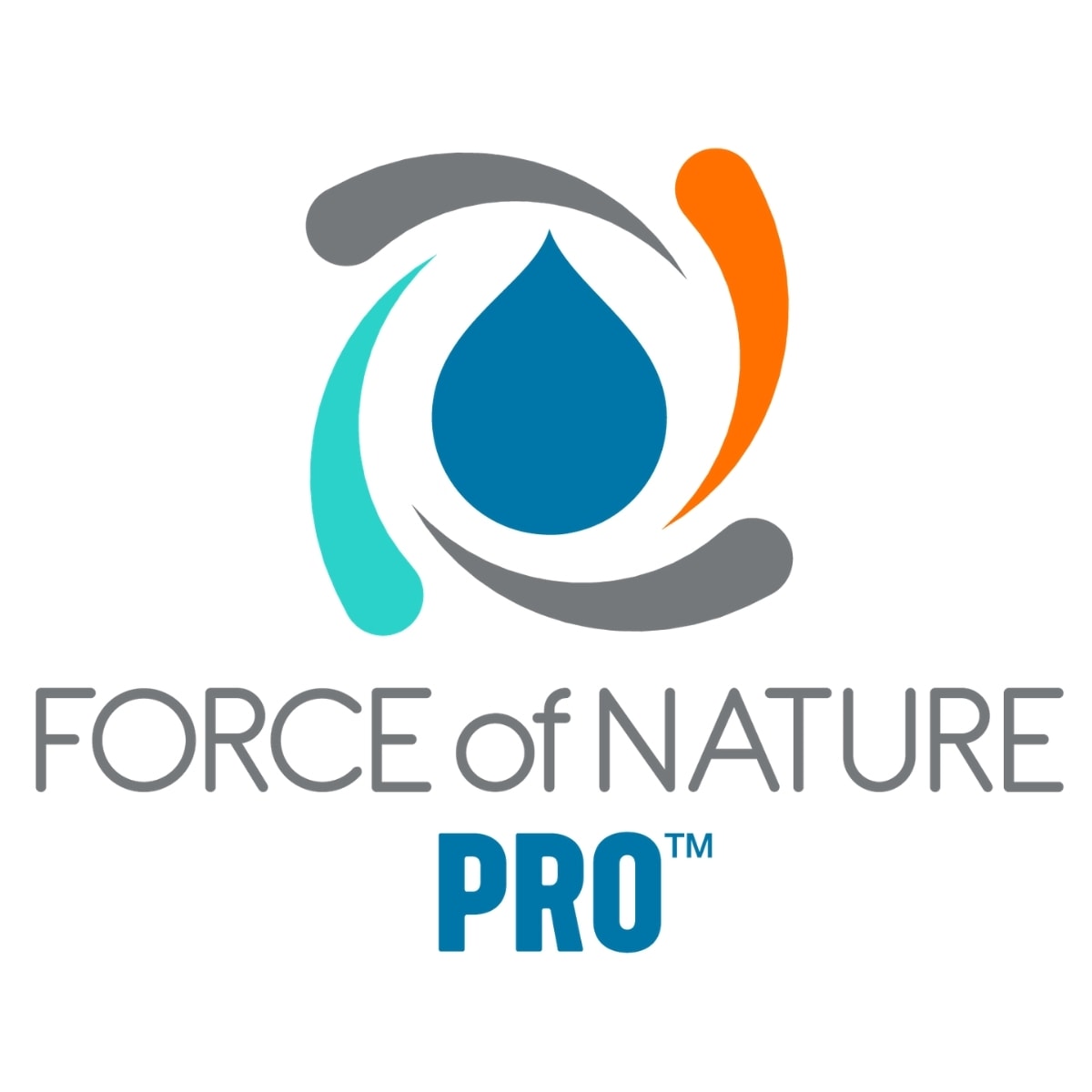Changes to the Leadership in Energy and Environmental Design, or LEED, rating system slated to take effect this spring will mark a big change from what’s required today to get your building certified as energy efficient and environmentally friendly. To a degree not required in past iterations of LEED standards, teams will need to have systems in place for monitoring building performance over time, not just when the certification is granted.
“If you look at [all the changes] together, you need to go from understanding baseline emissions all the way to continuous monitoring of the building,” Satish Ravindran, an asset and sustainability senior project manager at UL Solutions, said in a webcast hosted by the company.
The U.S. Green Building Council created the LEED rating system 25 years ago as a global benchmark for buildings to reduce their environmental impact. Almost 200,000 projects have been certified worldwide, according to an impact report USGBC released in November.
USGBC has been working on the latest iteration of the certification standards since 2023. When they come out, they’ll be the standards’ fifth version, LEED v5.
“It goes beyond LEED v4 in the suite of prerequisites for climate, equity and resilience,” Liz Beardsley, USGBC’s senior policy counsel, told Facilities Dive in 2023 while the organization was in the early phase of the changes.
For existing buildings, the point of the changes is to help teams get the property on a “pathway for improvement,” Beardsley said.
For buildings that are already green certified under version 3 or version 4, making changes to keep the building compliant under the new standards shouldn’t be a heavy lift, David Adler, an asset and sustainability consultant at UL Solutions, said in the company’s webcast. For teams aiming to make this their first certification, the process might be more challenging. But on the plus side, the new version will give teams more “optionality” than in previous versions on what path to take to get certified.
LEED v5 “has more credit options,” said Adler, referring to the ways building teams can earn points toward certification after they’ve met a slate of prerequisites. “It gives operations teams many levers to pull to get to their goal.”
Total time to get certified is expected to be under a year. “From kickoff to certification,” Adler said, you’re “looking at about 10 months.”
Energy use
The standards for existing buildings will broadly focus on three categories: energy, air quality and waste. In each one, continuous monitoring will be part of the mix.
In the energy category, for example, the team can do something that’s close to what’s required now, but if they want to get extra points, there’s another option for continuous monitoring using a building’s energy information system, if it has one.
“It ties all your systems together to track your data,” said Ravindran, referring to the building’s energy information system. “Now you’re able to see your end usage while also monitoring your performance.”
Taking the continuous monitoring approach is more intensive operationally but it can lead to savings down the road, enabling facilities managers to fix a problem before it leads to expensive energy losses.
“If something happens to your rooftop unit, and it has generated an alarm, you don’t want the energy to go up through the roof,” Ravindran said. “If you don’t even know the alarm is there, this visual system can indicate there’s one system that’s not functioning and your energy use is spiking. So, it helps you do an action based on that.”
LEED v5 will have a new credit that looks at energy reduction based on the building’s greenhouse gas emissions. “This is a big step from LEED because now you’ve got credits to address your scope 1, scope 2 and your overall emissions from your building,” Ravindran said. Scope 1 are emissions from the building itself and scope 2 are emissions from the plant from which the company buys power.
Air quality
There will be big changes to how the standards treat air quality. It’s currently a prerequisite to get air quality tested upfront. Under the outgoing version 4.1, the testing is based on occupancy satisfaction survey results and results of carbon dioxide and other testing. Under LEED v5, teams will be able to earn points based on the number of contaminants that are tested and if those results hit predetermined limits set within the LEED guidebook. Occupant surveys are still part of the air quality section, but it’s been broken out into an optional credit.
“LEED has put a heavy focus on the use of continuous monitoring of [air quality] sensors in buildings,” said Samuel Greninger, senior environmental manager at UL Solutions.
A dozen points are available through the use of these sensors. The sensors must take readings for at least four consecutive months of each year. Up to two points are awarded for each of the contaminants that are monitored, and additional points are available for meeting minimum enhanced limits for each of these parameters. The standards require data collected on at least six common building contaminants like carbon monoxide, particulate matter, ozone and nitrogen dioxide.
If your building doesn’t have continuous monitoring sensors in place, and the team elects not to install them, there are other options for obtaining air quality points, although they won’t total as many as continuous monitoring does, Greninger said.
Points are also available for strategies to improve air quality over time. The standards will look at things like building ventilation, filtration systems, entryways, operable windows and outdoor air monitoring, Greninger said.
Waste management
In the third big category, waste management, the standards are designed to encourage building teams to aim for zero waste.
“Zero waste has historically been an afterthought on many projects,” Alyssa Rueda, an asset and sustainability associate consultant at UL Solutions, said during the webinar. “Generally there have been more opportunities for points in energy and water, and it’s typically been more desirable to achieve those points.”
There will be two credits available, one for waste reduction and one for waste diversion. To earn the reduction point, teams must pick a strategy from three options: implementing an organic recycling program; improving waste collection management; and conducting a zero waste audit. To earn the diversion point, teams need to divert at least 6% of their waste from going into a landfill.
The prominence the new standard version gives to diversion is new. “Given such a massive emphasis on waste diversion … make sure you have some form of waste tracking or regular waste audits in place,” Rueda said. “V5 will be looking for this to develop a baseline.”
Rueda recommended looking beyond recycling and composting to start tracking donations of computers, books and food — types of waste not typically associated with green building. “Anything that would otherwise have been thrown away,” she said. “Track reusables [like] batteries, e-waste recycling [like computers], and soft plastics recycling. Find ways to divert the waste your building produces. Be proactive with waste opportunities.”
USGBC hasn’t pinpointed the release date of LEED v5 but the organization has said to look for it in early 2025.



